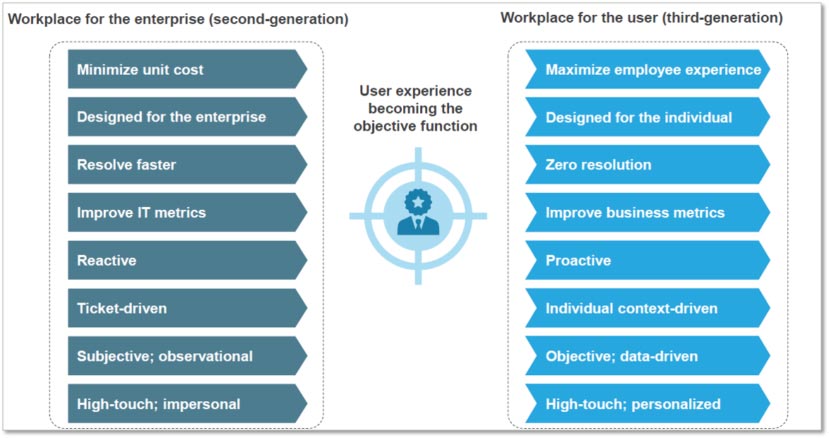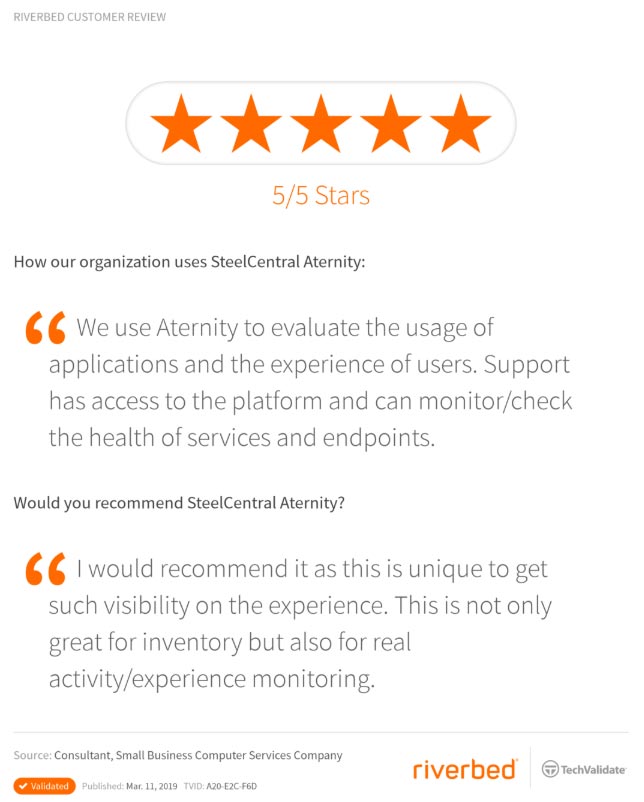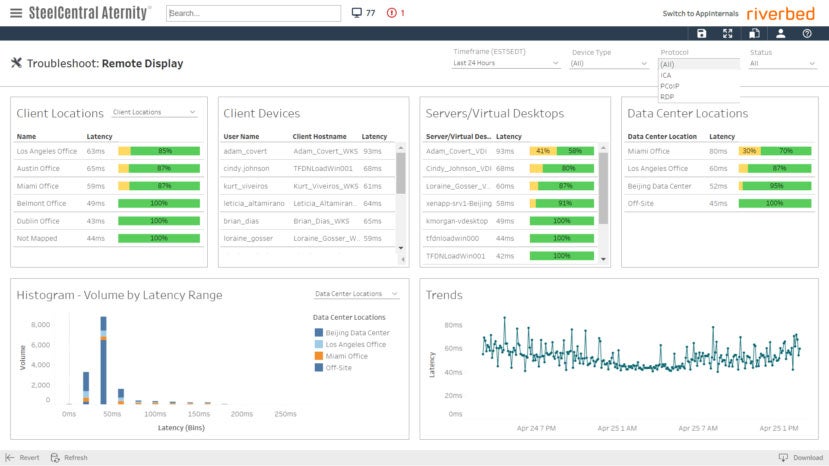The ROI of Digital Experience Monitoring: High Margin Digital Workplace Services
It’s a good time for service providers to be in the business of digital workplace services. Enterprises are implementing digital workplaces to provide employees with flexible, secure access to applications so they can collaborate and work wherever they are. Enterprise IT shops look to their service providers for help dealing with the complex technology decisions and implementations involved. But service providers face the same challenges as enterprise IT, in terms of reducing costs and delivering excellent customer service. Investing in Digital Experience Monitoring can help. Whether it’s reducing IT operational costs, or increasing revenue through high margin digital workplace service, the right vendor choice can deliver a compelling ROI of Digital Experience Monitoring.
The previous blogs on the ROI of Digital Experience Monitoring have focused on topics that apply equally well to enterprise IT and service providers. The recent TechValidate survey of SteelCentral Aternity customers shows how both types of teams have reduced trouble ticket volume and incident Mean Time to Repair. It also shows how companies derive extra value by using Aternity to address other use cases outside of operations. However, this blog covers a topic unique to service providers. Delivering high margin, value-added services is a key driver of the ROI of Digital Experience Monitoring for service providers. SteelCentral Aternity is well positioned to ensure success for providers of digital workplace services.
High margin services drive growth in digital workplace services and the ROI of Digital Experience Monitoring
The Everest Group breaks the digital workplace services market into seven sub-segments.

Desktop management and virtualization, unified communications, and mobility are the high growth segments of digital workplace services, according to the Everest Group.
Source: Everest Group Research: “Digital Workplace Services: Market Trends and PEAK™ Matrix Assessment,” June 2018
At 28%, service desk functions, like incident and request management and problem resolution, represent the largest segment. Everest Group projects a modest growth rate of 2-4%. For this area, earlier blogs on the ROI of Digital Experience Monitoring addressed how customers use Aternity to reduce ticket volume and the duration of incidents. And automated remediation enables service providers to further reduce operations cost and increase customer satisfaction.
Other slower growth segments include desk-side support, infrastructure apps, and asset management. All of these services face commodity pricing pressure from low cost providers in regions with lower labor rates.
In fact, these slower growth services are not at all unique to a digital workplace. They apply whether or not a company has a digital strategy. Higher growth segments reflect the technical challenges of implementing a digital workplace. Desktop virtualization enables companies to provide seamless, secure access to their employees wherever they work. Cloud-delivered unified communications ensures low cost collaboration across vast geographic distances. And mobility enables the workforce to engage customers wherever they are. Ensuring excellent end user experience is a fundamental requirement for enterprises to achieve these goals.
The role of end user experience in digital workplace services
The Everest Group portrays the user as the focus of “third generation” digital workplace services. So service providers must measure user experience in an objective and scalable way.

According to the Everest Group, “third generation” digital workplace services focus on the user not the enterprise.
Source: Everest Group Research: “Digital Workplace Services: Market Trends and PEAK™ Matrix Assessment,” June 2018
Unfortunately, most service providers rely on outdated methods to measure end user experience, such as Net Promoter Score, or customer satisfaction surveys. While useful for overall assessments of customer satisfaction, these approaches fall short on a few fronts for measuring for the effectiveness of a digital workplace service:
- Too infrequent. They don’t capture real-time experience.
- Not specific. They aggregate multiple users’ experience over time.
- Too imprecise. They’re not normalized to what is expected.
A robust approach to measuring actual end user experience provides many benefits to service providers. It enables them to better assure contract renewal, by demonstrating measurable business impact and continuous improvement over time. And it helps them prove the value of migrating to the new technologies involved in a digital workplace.
The Aternity approach to Digital Experience Monitoring
SteelCentral Aternity enables service providers to monitor the end user experience of every enterprise application in their customer’s portfolio, running on any physical, virtual, or mobile device.
enables service providers to monitor the end user experience of every enterprise application in their customer’s portfolio, running on any physical, virtual, or mobile device.
Unlike Device Performance Monitoring (DPM) products, Aternity automatically monitors and correlates together the three streams of data that constitute true user experience. These are user interactions, device health and performance, and application performance, as seen by the end user.
On the surface, DPM products sound similar to what Aternity does. But they provide only a subset of Aternity’s functionality. DPM products use lightweight agents to monitor the health and performance of end users PCs, laptops, and virtual desktops. They track operating system metrics, like resource utilization and health. Some DPM products also identify installed applications and app crashes.
These metrics certainly relate to end user experience. But they don’t provide any visibility into how end users are actually experiencing the applications they use. Even vendors which provide survey approaches to determining how happy employees are with IT, don’t provide insight to what needs to be addressed.
Measuring the impact of IT on the business
Aternity monitors the performance of applications as they render on the screens of the user’s device. Further, Aternity monitors the performance of business activities performed by the end user. These are company-defined user interactions with applications in the context of a business process. Examples include “look up a patient record,” or “process a claim,” or “check inventory.” Aternity ships with a variety of pre-defined activities for the most important Microsoft productivity apps. And building activities for other types of applications can be done by service providers or customers on their own. Aternity automatically develops baselines for what constitutes acceptable performance for these activities, and generates alerts when performance deviates from baseline.
Other Digital Experience Monitoring products emulate, extrapolate, or simulate end user experience. Aternity enables you to monitor the actual experience that users see, as they interact with every application in their portfolio. With SteelCentral Aternity, there’s no configuration required to discover every application actually in use throughout the enterprise, and track the key health indicators of those applications.

Aternity provides a User Experience Index (UXI) for every application in the enterprise portfolio, with no configuration required.
Some DPM vendors claim application performance capabilities, such as showing installed applications and application crashes. Aternity provides a much more comprehensive view of the impact of poor application performance on employee productivity. And it does this for every application in the enterprise estate, with no configuration required. For every application, Aternity calculates a User Experience Index (UXI), a measure from 1 to 5, which accounts for application crashes, hangs, errors and wait time.
Aternity shows UXI by application, by device or user, by device model, department, or geography, so that service providers can provide extra value to their clients by showing them the impact of poor IT performance on productivity.
Using Aternity for high margin digital workplace services
Service providers can use Aternity to ensure excellent digital experience of the key high growth segments of digital workplace services shown above. Here’s an overview.
1. Desktop and application virtualization
Desktop and application virtualization benefits, such as improving flexibility, operational efficiency, and control, won’t matter if companies cannot maintain excellent application performance. The challenge is that virtualization disrupts the traditional relationship between applications, physical hardware, operating systems, and presentation layers.
SteelCentral Aternity monitors the performance of any business transaction within any packaged or custom application, and correlates it with the key performance indicators of the underlying desktop virtualization. With SteelCentral Aternity, service providers can effectively plan desktop and application virtualization migrations and trouble shoot problems across all layers of the infrastructure.

Diagnose problems in the virtual infrastructure by trending remote display latency protocols, analyzing response by the end users’ locations and device metrics, and correlating application performance to the virtual system users are accessing.
2. Skype for Business Online
As the unified communications platform of Microsoft Office 365, Skype for Business Online is used by millions for messaging, conferencing, online meetings, and collaboration. Certified as Ready for Windows for Office 365 ProPlus, Aternity augments Microsoft’s monitoring and reporting tools to help IT ensure the excellent end user experience that is so key to effective collaboration. Watch this short video to see Aternity in action for monitoring Skype for Business Online.
3. Mobility/BYOD
The Enterprise Mobility Management capabilities that comprise service providers’ mobility practices are necessary first steps in addressing their customer’s challenges. But developing, provisioning, inventorying, and securing devices and applications, by themselves, don’t enable enterprises to use mobile to improve workforce productivity. Service providers must also monitor those business critical apps to ensure they deliver excellent mobile user experience. And that’s where SteelCentral Mobile APM comes in to play. Here’s a short video to explain:
The ROI of Digital Experience Monitoring: a summary
This series of blogs has addressed how to quantify the ROI of Digital Experience Monitoring. For some areas, the math is clear. The TechValidate survey of Aternity customers shows quantifiable operational benefits. Customers reduced the volume of Help Desk trouble tickets by 15% on average. They’ve lowered incident Mean Time to Repair by 3 hours, or 24%. The survey also shows that 40% of customers leverage Aternity for use cases outside of operations, such as improving application performance and validating the impact of IT change. For service providers, the ROI of Digital Experience Monitoring impacts top line revenue. With Aternity, service providers can offer the high growth, high margin digital workplace services that enterprises demand. They can differentiate their service from low cost competitors, cross-sell more services, and extend contract durations.
![]() If you’re ready to see the impact of Aternity on your business, you can get started today by registering for instant access to Aternity running in our cloud environment. You’ll get a guided tour through key uses cases for identifying and resolving issues, as well as for many others.
If you’re ready to see the impact of Aternity on your business, you can get started today by registering for instant access to Aternity running in our cloud environment. You’ll get a guided tour through key uses cases for identifying and resolving issues, as well as for many others.
